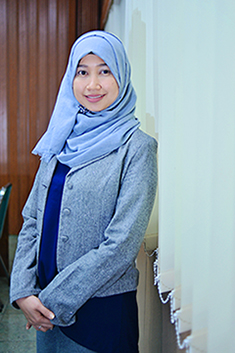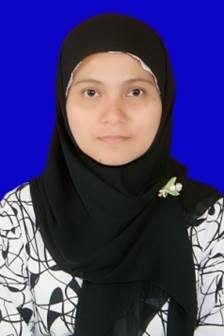Formulation of Lip Balm Extract of Temu Mangga Rhizome (Curcuma mangga Val) as Moisturizer
Downloads
Background: Lip balm moisturizes the lips and can be made from natural ingredients such as mango rhizome extract (Curcuma mangga Val), which is rich in antioxidants. Objective: This study aims to evaluate the formulation of lip balm with varying concentrations of mango rhizome extract and determine its optimal concentration. Methods: The research employs a qualitative and quantitative approach using 1 Kg of mango rhizome simplisia from Southeast Sulawesi. The lip balm formulations include extract concentrations of 0%, 5%, 10%, and 15%, involving ingredients such as mango rhizome extract, cera alba, olive oil, glycerin, BHT, nipasol, strawberry essence, D & C Red 6, and vaseline album. Evaluation was conducted through organoleptic tests, pH, homogeneity, adhesion, spreadability, melting point, cycling test, moisture, irritation, and panelist preference. All formulations demonstrated stability in color, texture, and aroma at room temperature and during the cycling test. Consistency, homogeneity, and pH of all formulas remained stable. Results: Spreadability and adhesion improved with the concentration of the extract, with Formula F3 (15% extract) showing the best results, including an increased melting point indicating thermal stability. All formulas were safe and did not cause irritation. Preference tests indicated that F3 was preferred for moisture, while F1 and F2 were favored for aroma and color. Conclusion: The mango rhizome extract lip balm is stable, safe, and effective as a lip moisturizer, with Formula F3 being the most effective. Future research is expected to develop other formulations from mango rhizome to enhance moisturizing effects while maintaining the stability of the preparation.
Ambari, Y., Rahmawati, M., Andayani, R., & Zulkifli, M. (2020). Studi Formulasi Sediaan Lip balm Ekstrak Kayu Secang (Caesalpinia sappan L.) dengan Variasi Beeswax. Journal of Islamic Pharmacy; 5; 36–45. Available at: doi: 10.18860/jip.v5i2.10434.
Bani, A., Ilham, F., Rahman, A., & Muchtar, A.. (2023) Rasio Nilai Rendamen dan Lama Ekstraksi Maserat Etanol Daging Buah Burahol (Stelecocharpus burahol) Berdasarkan Cara Preparasi Simplisia. Makassar Natural Product Journal; 1; 176–184.
Arizona, M. & Zulkarnain, A. K. (2018). Optimasi Formula dan Uji Aktivitas Secara In Vitro Lotion O/W Ekstrak Etanolik Rimpang Temu Mangga (Curcuma mangga Val. dan van Zijp) sebagai Tabir Surya. Majalah Farmaseutik; 14; 29. doi: 10.22146/farmaseutik.v14i1.41926.
Aulia, M. I., Rustikawati & Inoriah, E. (2020). Respon Temu Putih dan Temu Mangga dengan Pemberian BA dan 2,4-D secara In Vitro. Gema Agro; 25; 92–102.
Azmin, S. N. H. M., Jaine, N. I. M. & Nor, M. S. M. (2020). Physicochemical and Sensory Evaluations of Moisturising Lip balm using Natural Pigment from Beta Vulgaris. Cogent Engineering; 7; 1788297. doi: 10.1080/23311916.2020.1788297.
Badaring, D. R., Sumarsa, J., & Pratama, R. (2020). Uji Ekstrak Daun Maja (Aegle marmelos L.) terhadap Pertumbuhan Bakteri Escherichia coli dan Staphylococcus aureus. Indonesian Journal of Fundamental Sciences, 6; 16. doi: 10.26858/ijfs.v6i1.13941.
Bielfeldt, S., Götz, S., Meier, M., Kapp, A., & Schaller, M. (2019). Deposition of Plant Lipids After Single Application of a Lip Care Product Determined by Confocal Raman Spectroscopy, Corneometry and Transepidermal Water-Loss. International Journal of Cosmetic Science; 41; 281–291. doi: 10.1111/ics.12533.
Bintoro, A., Ibrahim, A. M. & Situmeang, B. (2017). Analisis dan Identifikasi Senyawa Saponin Dari Daun Bidara (Zhizipus mauritania L.). Jurnal Itekima; 2; 84–94.
Butler, H. (2000). Poucher’s Perfumes, Cosmetics, and Soaps. London: Kluwer Academic Publisher.
Chandra, D., Tandiono, S. & Irianto, T. M. (2023). Pelembab Bibir Lip balm dengan Memanfaatkan Ekstrak Daun Anggur (Vitis vinifera L.). Jurnal Ilmu Farmasi dan Kesehatan; 1; 143–158. doi: 10.59841/an-najat.v1i2.189.
Dal’Belo, S., Gaspar, L. & Campos, P. (2006). Moisturizing Effect Of Cosmetic Formulations Containing Aloe Vera Extract In Different Concentrations Assessed By Skin Bioengineering Techniques. Skin Research And Technology: Official Journal Of International Society For Bioengineering and the Skin (ISBS) and International Society for Digital Imaging of Skin (ISDIS) and International Society for Skin Imaging (ISSI); 12; 241–246. doi: 10.1111/j.0909-752X.2006.00155.x.
Depkes RI. (2020) Farmakope Indonesia edisi VI. Jakarta: Departemen Kesehatan Republik Indonesia.
Ekayani, M., Juliantoni, Y. & Hakim, A. (2021). Uji Efektivitas Larvasida Dan Evaluasi Sifat Fisik Sediaan Losio Antinyamuk Ekstrak Etanol Daun Kirinyuh (Chromolaena odorata L.) Terhadap Nyamuk Aedes Aegypti. Jurnal Inovasi Penelitian; 2; 1261–1270.
Elfariyanti, Zarwinda, I. & Dewi Safrida, Y. (2022). Gambaran Pengetahuan Masyarakat Tentang Macam Rimpang Temu Sebagai Jamu Di Indonesia. E-proceeding 2 nd SENRIABDI; 2; 17–23.
Erwan, F., Ahmad, R., Nurul, R., & Dian, M. (2022). Experimental Design of Lip Moisturizer as a Patchouli-Based Innovation Product. Journal of Patchouli and Essential Oil Products; 1; 14–17. doi: 10.24815/jpeop.v1i1.23748.
Hayati, M., Nusantari, C. S. & Shinta, W. (2024). Formulasi dan Uji Fisik Sediaan Lip balm Dari Ekstrak Biji Alpukat (Persea americana Mill) Sebagai Pelembab. INPHARNMED Journal (Indonesian Pharmacy and Natural Medicine Journal); 7; 84. doi: 10.21927/inpharnmed.v7i2.3875.
Hendrika, Y. & Sandi, N. H. (2021). The Antidiabetic Activity of Curcuma mangga Val. Rhizome Ethyl Acetate Fraction against Mice Induced by Alloxan. JPK: Jurnal Proteksi Kesehatan; 10; 55–61. doi: 10.36929/jpk.v10i1.348.
Imani, C. F. (2022). Moisture Test Of Aloe Vera (Aloe vera L.) Leaf Extract Lip Balm. Jurnal Pharma Bhakta; 2; 44–51.
Jacobsen, P. (2011) The little Lip Book. USA: Carma Laboratories Incorporated.
Kadu, M., Vishwasrao, S. & Singh, S. (2015). Review on Natural Lip Balm. International Journal of Research in Cosmetic Science; 5; 1–7.
Kase, M. G., Prasetyaningsih, A. & Aditiyarini, D. (2023). Antioxidant and Antibacterial Activity of Pomegranate Extract (Punica granatum L.) in Lip balm Formulation. Biology, Medicine, & Natural Product Chemistry; 12; 109–117. doi: 10.14421/biomedich.2023.121.109-117.
Latifah & Tranggono, R. I. (2007). Buku Pegangan Ilmu Pengetahuan Kosmetik. Jakarta: PT. Gramedia Pustaka Utama.
Lestari, U. (2021). Formulasi Lipstik Pelembab Bibir Berbahan dasar Minyak Tengkawang (Shorea sumatrana) dengan perwarna Alami Resin Jernang (Daemonorops didympophylla). Chempublish Journal; 6; 12–21. doi: 10.22437/chp.v6i1.12544.
Mojumdar, E., Chattopadhyay, A., Ghosh, A., & Mandal, M. (2017). Skin Hydration: Interplay Between Molecular Dynamics, Structure and Water Uptake in the Stratum Corneum. Scientific Reports; 7; 1-13. Available at: doi: 10.1038/s41598-017-15921-5.
Permenkes. (2010). Peraturan Menteri Kesehatan RI. Nomor 1175/Menkes/Per/VIII/2010. Jakarta: Kementrian Kesehatan.
Pawestr, A. C., Yamlean, P. V. & Sumantri, A. S. (2024). Uji Stabilitas Fisik Sediaan Pelembab Bibir (Lip balm) Ekstrak Etanol Buah Tomat (Solanum lycopersicum L.). Jurnal Pharmacon; 13; 434–447. doi: 10.35799/pha.13.2024.49321.
Pertiwi, R. D. & Unggul, U. E. (2023). Formulation and Evaluation of Lip balm from Rambutan Fruit Extract Formulasi dan Evaluasi Sediaan Lip balm dari Ekstrak Kulit Buah Rambutan (Nephelium lappaceum L.) Formulation and Evaluation of Lip balm from Rambutan Fruit Extract. Archives Pharmacia; 5; 88-101.
Pujimulyani, D., Jannah, L., Setyowati, E., & Siregar, A. (2020). Cosmeceutical potentials of Curcuma mangga Val. extract in human BJ fibroblasts against MMP1, MMP3, and MMP13. Heliyon; 6; e04921. doi: 10.1016/j.heliyon.2020.e04921.
Pusmarani, J. P. (2023). Formulation and Antioxidant Activity of Lip balm Containing Banana Peel (Musa paradisiaca var. Sapientum) Methanol Extract. Indonesian Journal of Pharmaceutical Science and Technology; 1; 35-41. doi: 10.24198/ijpst.v0i0.46009.
Rao, B. (2020). Pharmaceutical Research Methodology and Bio-Statistics: Theory and Practice. Hyderabad: PharmaMed Press.
Rasyadi, Y., Agustin, D. & Aulia, G. (2022). Aktivitas Antioksidan Lip balm Ekstrak Etanol Bunga Kecombrang (Etlingera elatior (Jack) R.M.S.m). Jurnal Insan Farmasi Indonesia; 5; 140–148. doi: 10.36387/jifi.v5i1.896.
Rostamailis. (2005). Perawatan Badan, Kulit dan Rambut. Jakarta: Rineka Cipta.
Sari, D. E. M. & Susilongingrum, D. (2022). Penentuan Nilai SPF Krim Tabir Surya Yang Mengandung Ekstrak Temu Mangga (Curcuma mangga Valeton & Zijp) dan Titanium Dioksida. Cendekia Journal of Pharmacy; 6; 102–111. doi: 10.31596/cjp.v6i1.183.
Sariwating, M. & Wass, E. S. R. (2020). Formulasi Sediaan Lip balm Kombinasi Perasan Buah Mentimun (Cucumis sativus L.) dan Buah Jeruk Nipis (Citrus aurantiifolia) Sebagai Pencerah Bibir. Jurnal Jufdikes; 2; 21–26.
Septia, D., Henry, Roanisca, O. & Mahardika, R. G. (2020). Skrining Fitokimia dan Penetapan Kandungan Total Fenolik Ekstrak Daun Tumbuhan Sapu-Sapu (Baeckea frutescens L.). Biotropika: Journal of Tropical Biology; 8; 178–185. doi: 10.21776/ub.biotropika.2020.008.03.06.
Sheskey, Walter G, C. (2017). Handbook of Pharmaceutical Excipients. London: Pharmaceutical Press.
Sholehah, Y. Y., Malahayati, S. & Hakim, A. R. (2022). Formulasi dan Evaluasi Sediaan Lipbalm Ekstrak Umbi Bit Merah (Beta vulgaris L.) Sebagai Antioksidan. Journal Pharmaceutical Care and Sciences; 3; 14–26. doi: 10.33859/jpcs.v3i1.205.
Simanullang, G. (2023). Formulasi dan Evaluasi Stabilitas Fisik Sediaan Lip Balm Minyak Bekatul (Rice Bran Oil). Media Farmasi Indonesia; 18; 124-135. doi: 10.53359/mfi.v18i2.230.
Sudarwati, T. P. L. & Fernanda, M. A. H. F. (2019) Aplikasi Pemanfaatan Daun Pepaya (Carica Papaya) Sebagai Biolarvasida Terhadap Larva Aedes aegypti. Gresik: Graniti.
Sugiyono. (2022). Metode Penelitian Kuantitatif, Kualitatif dan R&D. Bandung: Alfabeta.
Suleman, A. W., Farina, R., Rahman, H. A. A., & Rahman, N. A. (2022). Formulasi Dan Evaluasi Stabilitas Sediaan Lip Balm Ekstrak Kulit Buah Naga Merah (Hylocereus polyrhizus) Dengan Penambahan Minyak Zaitun Sebagai Emolien Serta Penentuan Nilai Spf (Sun Protection Factor). Medical Sains: Jurnal Ilmiah Kefarmasian; 7; 899–906. doi: 10.37874/ms.v7i4.428.
Susiloningrum, D. & Mugita Sari, D. E. (2021). Uji Aktivitas Antioksidan Dan Penetapan Kadar Flavonoid Total Ekstrak Temu Mangga (Curcuma mangga Valeton & Zijp ) Dengan Variasi Konsentrasi Pelarut. Cendekia Journal of Pharmacy; 5; 117–127. doi: 10.31596/cjp.v5i2.148.
Tampubolon, A. (2023). Formulasi Lip Balm Ekstrak Lidah Buaya (Aloe Vera) Dan Buah Naga Merah (Hylocereus Polyrhizus) Sebagai Lip balm Formulation Of Aloe Vera Extract And Red Dragon FruiT (Hylocereus Polyrhizus) AS A Moisturizing Lips. Jurnal Riset Kefarmasian Indonesia; 5; 310-321.
Wendersteyt, N. V., Wewengkang, D. S. & Abdullah, S. S. (2021). Uji Aktivitas Antimikroba Dari Ekstrak dan Fraksi Ascidian Herdmania Momus Dari Perairan Pulau Bangka Likupang Terhadap Pertumbuhan MikrobA Staphylococcus aureus, Salmonella typhimurium dan Candida albicans. Pharmacon; 10; 706. doi: 10.35799/pha.10.2021.32758.
Yuandani, Y., Jantan, I., Rohani, A. S. & Sumantri, A. S. (2021). Immunomodulatory Effects and Mechanisms of Curcuma Species and Their Bioactive Compounds: A Review. Frontiers in Pharmacology; 12; 1-26. doi: 10.3389/fphar.2021.643119.
Yulianti, I. & Santoso, J. (2020). Identifikasi Tanin Dan Aktivitas Antioksidan Ekstrak Daun Benalu Mangga (Dendrophthoe petandra) Menggunakan Metode Maserasi Dan Sokletasi. Undergraduate Thesis; Politeknik Harapan Bersama, Tegal.
Zang, W., Fang, M., Xiao, N., Zhang, X., Lin, C., & Wang, S. (2024). Quantifying the Dose-Response Relationship Between Exercise and Health-Related Quality of Life In Patients Undergoing Haemodialysis: A meta-analysis. Preventive Medicine Reports; 42; 102737. doi: 10.1016/j.pmedr.2024.102737.
Copyright (c) 2025 JURNAL FARMASI DAN ILMU KEFARMASIAN INDONESIA

This work is licensed under a Creative Commons Attribution-NonCommercial-ShareAlike 4.0 International License.
1. The copyright of this journal belongs to the Editorial Board and Journal Manager with the author's knowledge, while the moral right of the publication belong to the author.
2. The formal legal aspect of journal publication accessibility refers to the Creative Commons Attribution-Non-Commercial-Share Alike (CC BY-NC-SA), which implies that the publication can be used for non-commercial purposes in its original form.
3. Every publication (print/electronic) is open access for educational, research, and library purposes. In addition to the objectives mentioned above, the editorial board is not responsible for copyright infringement


.jpg)















